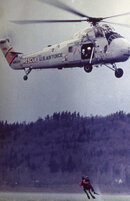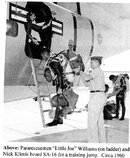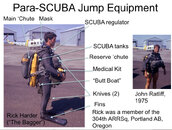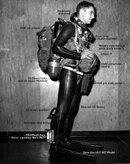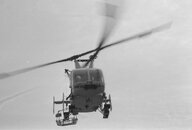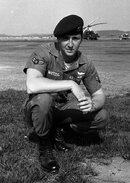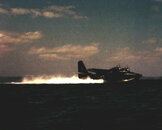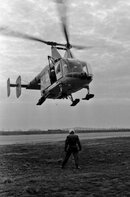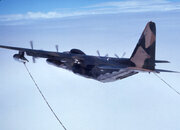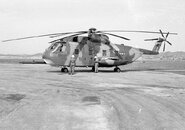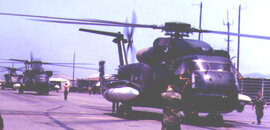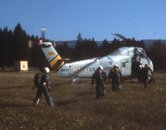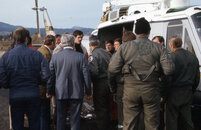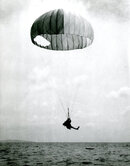Trailboss,Keep it coming John-- You are the MAN!! Here is a photo of my son. To this day, I'm not sure if he landed in the river, lake or desert. LOL!
#RescuePJ's! #ThatOthersMayLive!
View attachment 415172
It sounds like your son is in the 304th Rescue Squadron in Portland, Oregon. I was a member of that PJ group from 1972 to 1977. But I got out before we did any free-fall jumps. So all my jumps were static line while there, and usually from a helicopter. We started out with the HH-43 helicopter. In the photo below, PJ John Pierson and me are being picked up out of the Columbia River. John was simulating being a survivor, and had inflated LPUs on (Underarm Life Preservers). This photo is one you may have seen before, as it is a copy of one that was in the 304th Ops area.
When I was in the 304th ARRSq (as it was then called--Aerospace Rescue and Recovery Squadron), we had two senior PJs named Mike Clooney and Dave Ward. On our medical evaluations, one would call himself "Luck" and one "Fate." They would go around looking at the medical problem, then say, "As Luck would have it..." or "As Fate would have it..." and modify our problem with disasters ("he's bleeding out from his leg" or "he just stopped breathing").
Getting away from the 304th RSQ, I was on the first trans-Pacific flight of helicopters with Master Sergeant Jerome C. Gorney. While we were in Alaska, he gave me some advise after pulling me away to talk. He said, "John, ATTENTION TO DETAIL, that's the key, whether it's a jump mission, diving or helicopter ops, attention to the details is extremely important. Get the details right, and the jump, dive, etc. will go right. If you neglect any detail, things get bad in a hurry." I've kept that information, and pass it along to all the divers, divemasters, tech divers, PJs and anyone else who could profit from it.
John
Attachments
Last edited:




